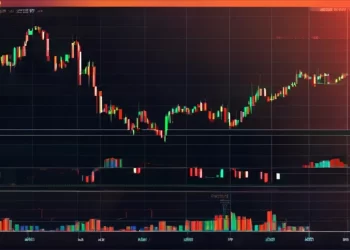Investor optimism has been bolstered by the cryptocurrency market’s recent upswing, driven by significant rallies in popular coins like Ethereum and Bitcoin. With significant events such as the approval of the U.S. Spot Bitcoin ETF and the Bitcoin Halving shaping the landscape, investors are now contemplating the potential duration of the ongoing bull cycle.
In the meantime, Ki Young Ju, the founder of CryptoQuant, has hinted at a potential end date for the current bull cycle in insights he recently released based on on-chain data.
Analyzing On-Chain Data for Bitcoin’s Bull Cycle End
The CEO of CryptoQuant, Ki Young Ju, has highlighted using on-chain data to shed light on the course of the Bitcoin bull cycle. Ju demonstrated that the cryptocurrency is in a bull cycle by sharing a price chart on the X platform, with its market capitalization surpassing its realized capitalization.
He added that, according to past patterns, these cycles normally endure for two years. Based on this pattern, he claimed that the current Bitcoin bull cycle might end by April 2025.
Ju’s report was notably released during a rising confidence in the cryptocurrency market, as evidenced by this week’s notable inflows into the U.S. Spot Bitcoin ETF. According to Farside Investors statistics, the ETF witnessed inflows above $726 million over the past four days, increasing investor interest.
Eric Balchunas, senior ETF analyst at Bloomberg, commented on the development and highlighted the ETF’s strong performance, noting inflows of $1.3 billion over the previous two weeks. According to him, this week’s large influx has restored investor confidence and helped counteract earlier outflows.
Market Attitude Amid Momentum Comeback
Cryptocurrencies like Bitcoin, Solana, and others’ recent performance suggests that advocates for the crypto market are beginning to feel more confident about digital assets. Notably, recent data from the Consumer Price Index (CPI) in the United States has helped to increase investor confidence.
The statistics showed that April’s inflation was lower than March’s, suggesting that the Federal Reserve may be moving away from its aggressive stance on policy rates. If inflation keeps down, the Fed’s prospective reevaluation of monetary policy may affect market dynamics and investor mood in the upcoming months.
Even with the recent improvements, volatility still appears to control the market. According to CoinGlass data, the Bitcoin Futures Open Interest increased by roughly 1.26% in the last four hours to reach 490.28K BTC, or $32.65 billion, but fell by 1.36% over the previous twenty-four hours.
The price of Bitcoin, meanwhile, saw modest gains and closed at $66,440.54, up 0.53% from the previous day. However, trading volume decreased by 23.31% to $30.20 billion, and the price of Bitcoin reached a 24-hour high of $66,545.81. The leading cryptocurrency has increased by almost 7% in the last 30 days, with a weekly increase of more than 5%.
























